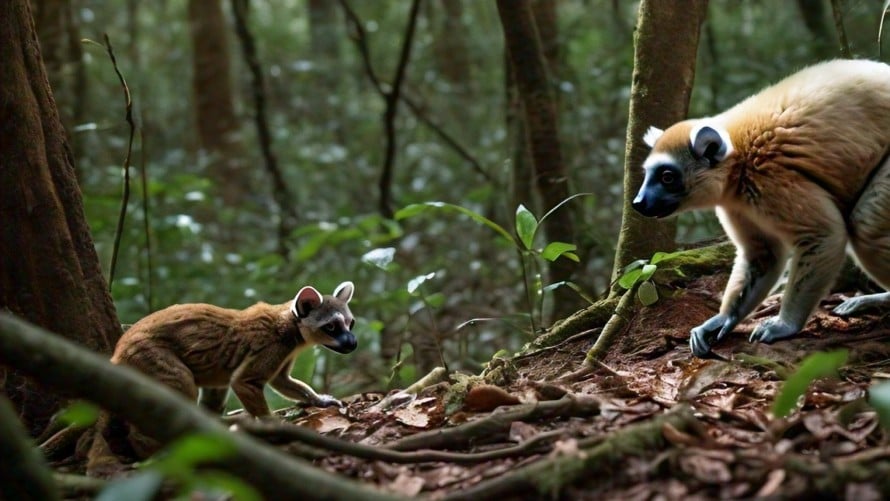In a rare and troubling observation, researchers from Washington University in St. Louis and the University of Antananarivo in Madagascar witnessed attacks on critically endangered diademed sifaka lemurs by another vulnerable species, the fosa, at Betampona Strict Nature Reserve. The study, published in Ecology & Evolution, highlights the complex dynamics between threatened species in isolated or poor-quality habitats.
Rare Sighting of Fosa Predation on Adult Lemurs
“We were conducting our daily behavioral observations when we came across a very unusual sight — a predation attempt by a fosa, which is the biggest predator in Madagascar,” said WashU’s Giovanna Bonadonna, a postdoctoral research associate in biological anthropology and the study’s co-first author. “What we saw was very rare. There are not so many predators that could actually get them.”
Fosas, cat-like carnivores and part of the weasel family, are categorized as vulnerable by the International Union for Conservation of Nature and Natural Resources. They are rarely caught in the act of hunting, making this observation particularly significant.
Impact on Lemur Survival at Betampona Reserve
The researchers described other instances over a 19-month observation period when fosas appeared to stalk lemurs but were unsuccessful in capturing them. The impact of predation, combined with low reproductive rates and potentially high inbreeding of the lemur population at Betampona, could affect the survival of this species at the site.
Betampona, Madagascar’s first protected reserve created in 1927, comprises about 22 square kilometers of rainforest surrounded by agricultural land. Its small size and isolation make it difficult for plants and animals to continue breeding and surviving in the reserve.
Challenging Conservation Efforts in Isolated Habitats
“Although Betampona is one of the best protected reserves in Madagascar, its isolation from other viable forests with lemur populations has created a predicament in which the critically endangered lemurs cannot engage in typical dispersal patterns, leading to genetic and demographic isolation,” said Lisa Kelley, executive director of the Saint Louis Zoo Wildcare Institute.
The study highlights the complexity of conservation efforts when one threatened animal kills another, particularly in compromised habitats. “It’s not that the fosa is the bad guy,” Bonadonna said. “It’s also in need of conservation. This study really highlights how complicated it can be. Human activities lead to changes in dynamics within ecosystems, having cascading effects beyond even what people realize.”


